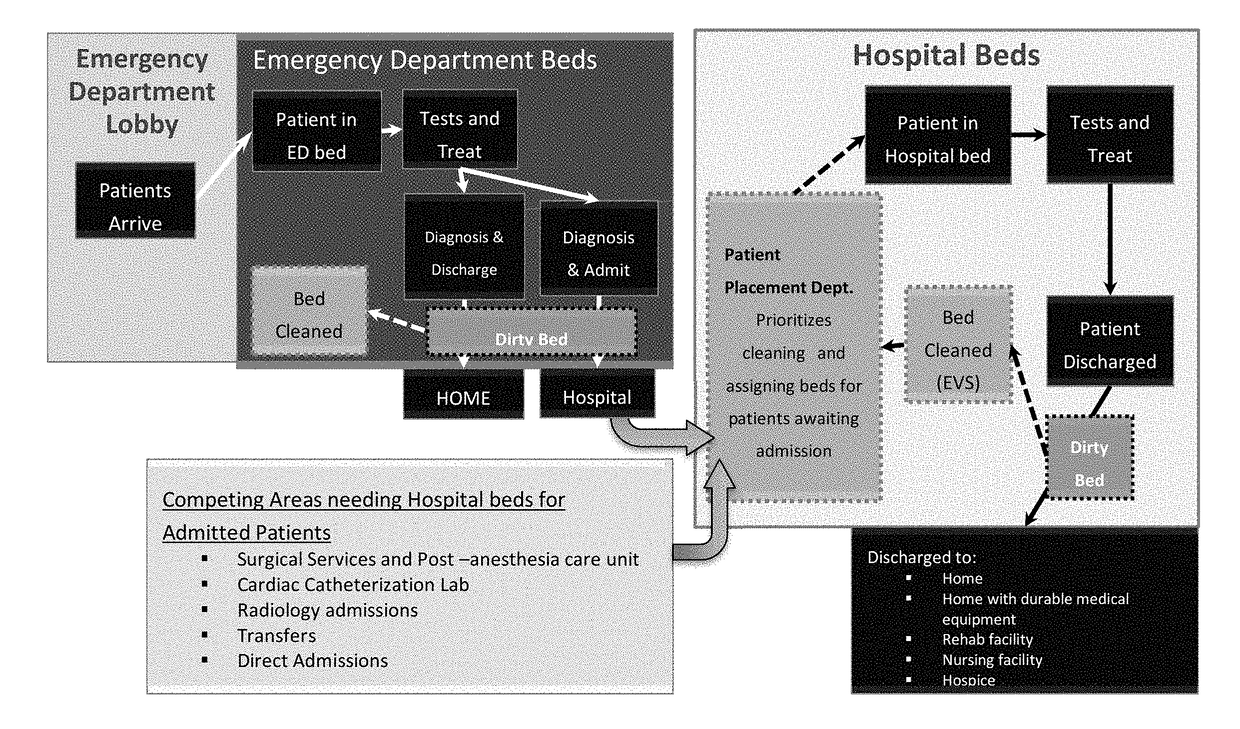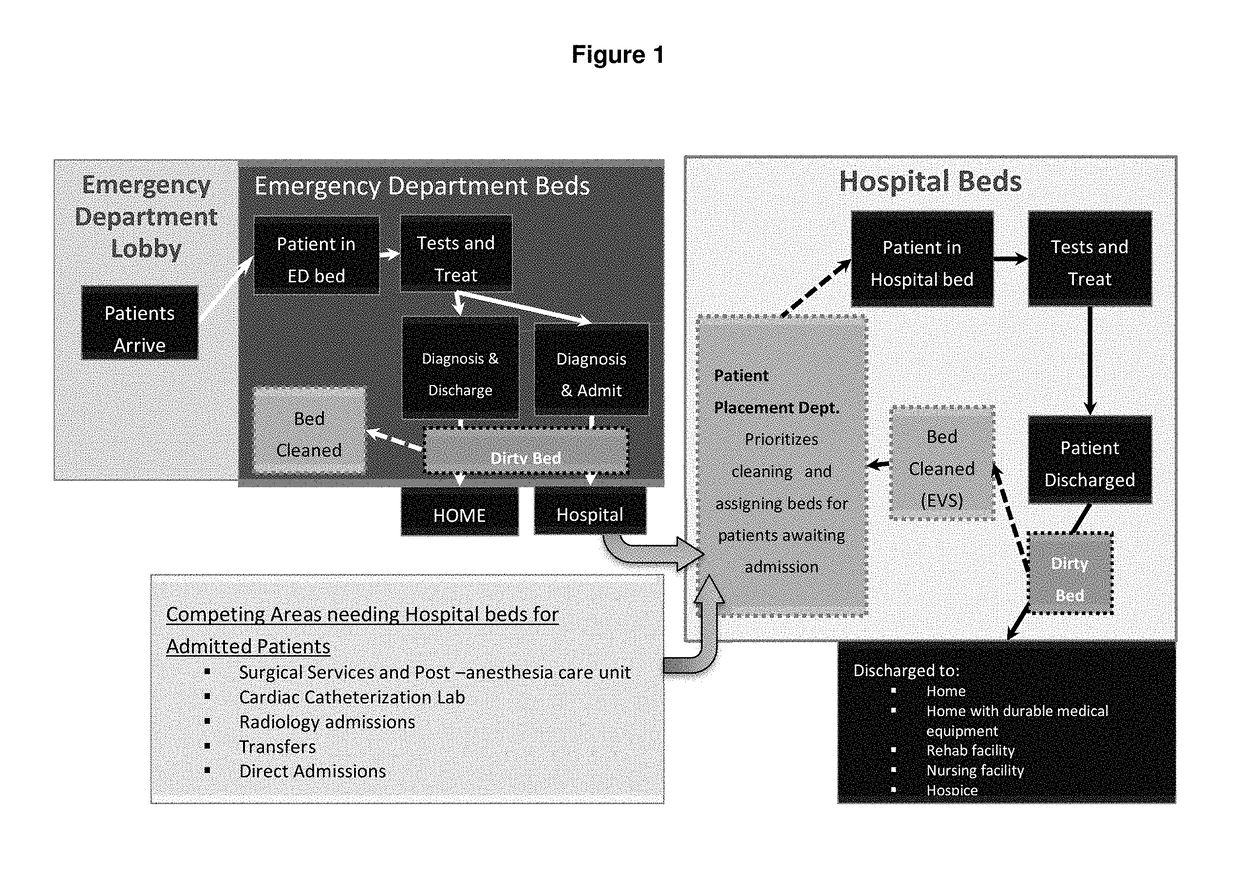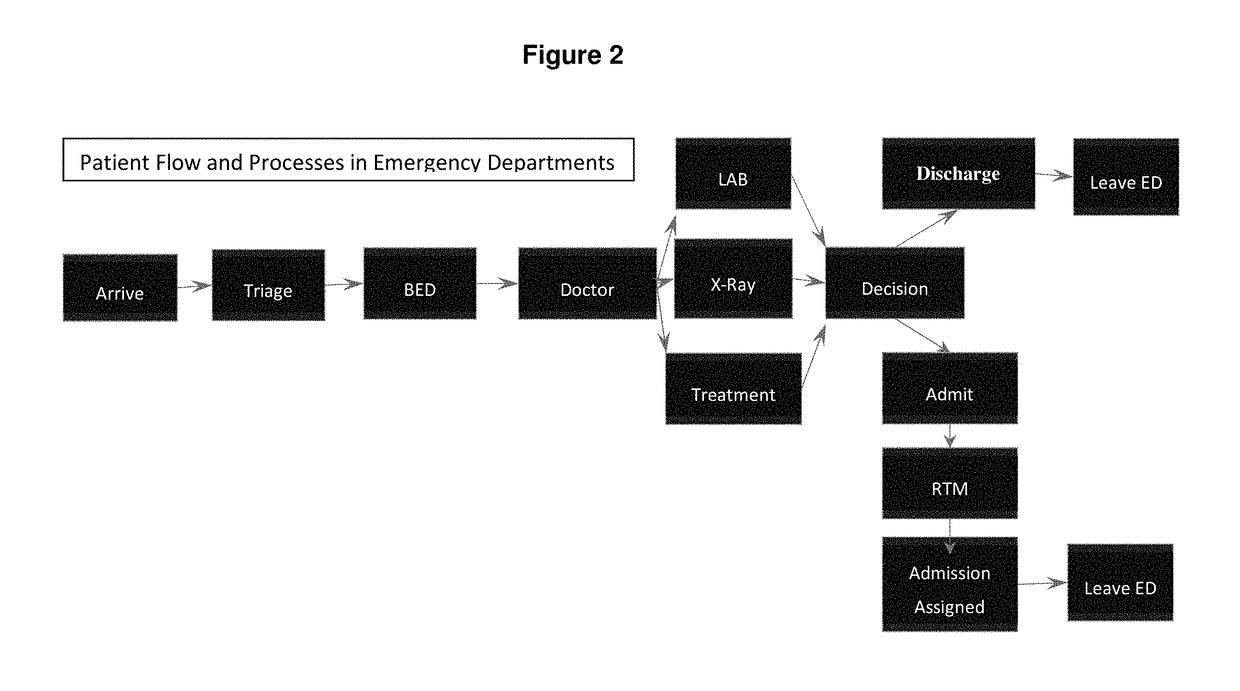System and method and graphical interface for performing predictive analysis and prescriptive remediation of patient flow and care delivery bottlenecks within emergency departments and hospital systems
a technology for emergency departments and hospital systems, applied in the field of hospitals, can solve the problems of inefficiency of alert management, no system that identifies, no system presently exists that measures the queue depth of each process step,
- Summary
- Abstract
- Description
- Claims
- Application Information
AI Technical Summary
Benefits of technology
Problems solved by technology
Method used
Image
Examples
Embodiment Construction
)
[0072]The following detailed description of the example embodiments refers to the accompanying figures that form a part thereof. The detailed description provides explanations by way of exemplary embodiments. It is to be understood that other embodiments may be used having mechanical and electrical changes that incorporate the scope of the present invention without departing from the spirit of the invention.
[0073]The present invention uses time stamp data to analyze and identify arrival patterns, processes, and patient acuity variations causing bottlenecks and inefficient use of bed resources, testing resources, staff resources, and pharmacy resources. The processes involve multiple components. These components are the hospital, the emergency department, the operating room and post-anesthesia care unit, the cardiac catheterization laboratory, and the radiologic procedure room, transfers to the hospital from other hospitals and direct admissions to the hospital.
[0074]FIG. 1 illustra...
PUM
 Login to View More
Login to View More Abstract
Description
Claims
Application Information
 Login to View More
Login to View More - R&D
- Intellectual Property
- Life Sciences
- Materials
- Tech Scout
- Unparalleled Data Quality
- Higher Quality Content
- 60% Fewer Hallucinations
Browse by: Latest US Patents, China's latest patents, Technical Efficacy Thesaurus, Application Domain, Technology Topic, Popular Technical Reports.
© 2025 PatSnap. All rights reserved.Legal|Privacy policy|Modern Slavery Act Transparency Statement|Sitemap|About US| Contact US: help@patsnap.com



